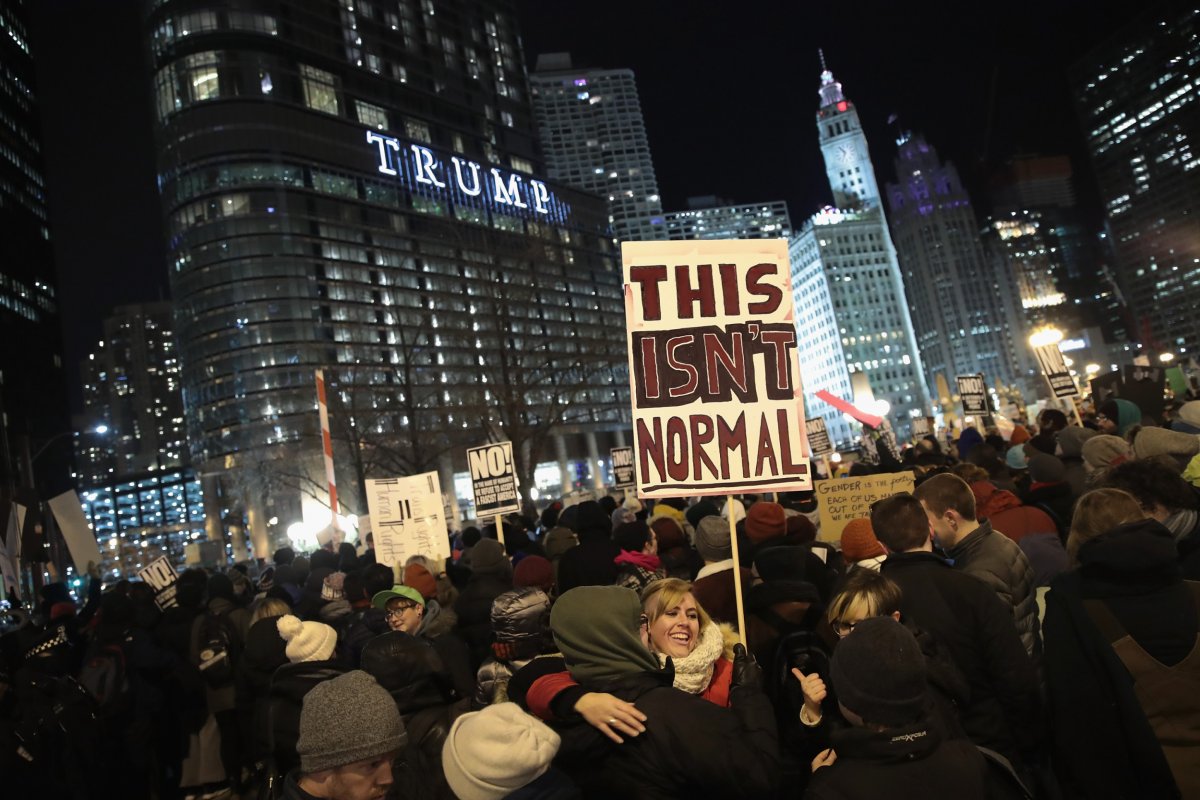Across the United States, more people are dying from so-called "deaths of despair"—suicide, drug and alcohol poisoning, and alcoholic liver disease—than at any other point in recorded history, according to the Centers for Disease Control and Prevention (CDC).
In 2017, the overall death rate from deaths of despair (45.8 people per 100,000) outpaced lung cancer, stroke and car crashes when adjusting for age, according to CDC data. That's an increase of more than 180 percent since 2000.
Driven primarily by heart disease and an unprecedented epidemic of drug overdoses, death-by-despair has contributed to three years of consecutive reductions in average life expectancy, making the U.S. the only wealthy nation in modern times to exhibit such a reversal, according to the CDC and Deaths of Despair and the Future of Capitalism, a new book by Princeton faculty members Anne Case and Angus Deaton.
"The pillars that once helped give life meaning—a good job, a stable home life, a voice in the community—have all eroded," Case said in a written statement to Newsweek.
Between the ages of 25 and 40, about half of all deaths among whites in the U.S. are attributable to suicide, alcohol-related liver deaths and overdoses, according to Case and Deaton. For whites in their 40s, they account for about a third of all deaths; for those in their early 50s, about 20 percent.
The underlying cause: U.S. capitalism and democracy stopped working for those without college degrees, Case wrote. The labor market is getting harsher, men's wages have stagnated for fifty years, good jobs with benefits are disappearing and companies are outsourcing less-skilled work, she continued.
"All wealthy countries must respond to the impact of globalization and technological change. What makes the U.S. different? For one, the U.S. is alone in financing so much of healthcare through employment, at costs that far exceed those paid in other wealthy countries," Case said. It's led companies to shed jobs and keep wages low for those who remain in order to pay for their coverage, she continued.
Employers fronted the bulk of health spending in 2017 (20 percent) after the federal government and households (28 percent), according to the Centers for Medicare and Medicaid Services. For more than a decade, they've been shifting costs to workers in the form of high-deductible health plans in order to get premiums under control.

The exact relationship between despair as measured by these deaths and health care costs or unemployment is uncertain, but studies show that coverage itself leads to more treatment for the substance use and mood disorders behind their resurgence.
For instance, prescriptions for buprenorphine, a key addiction medication, increased by 70 percent in states that expanded Medicaid coverage under the Affordable Care Act, according to a study published by the American Public Health Association. The drug reduces the risk of overdosing by more than 50 percent, but remains under-prescribed at a time when less than 10 percent of people who need treatment for opioid use disorder receive it, the World Health Organization reports.
"If we had easier and more affordable access to high-quality, evidence-based physical and mental health care, many, many fewer people would die," said Jeremiah Goulka, a researcher and senior fellow at the Health in Justice Action Lab at the Northeastern University School of Law, in an interview with Newsweek. "And it would also reduce the stigma toward seeking treatment for a lot of the problems that fall into the bucket of deaths of despair."
Making things worse is the fact that illicit supply of drugs is getting more dangerous. To be certain, the combined mortality rate from suicides and alcohol-related deaths is higher than at any point in the last century—but it's not increased exponentially, like drug overdoses have.
Far outpacing growing unhappiness since the 1990s, deaths due to drug poisoning probably point to a "supply-side" problem, rather than mere demand for ways to numb the pains of U.S. life, according to a recent report by the social capital project in Congress' joint economic committee.
"Rising unhappiness may have increased the demand for ways to numb or end despair... But the proliferation of a uniquely addictive and deadly class of drugs has meant that the supply of despair relief has become more prevalent and more lethal, which would have increased mortality even absent an increase in despair," the committee's Republicans wrote.
The proliferation of opioid deaths began with the oversupply and abuse of legal painkillers. In the aftermath, federal regulations cracked down on prescriptions, but some people, including former borrowers of their friends' and families' Oxycontin stash, turned to the street supply. Today, the CDC reports that illicit fentanyl, a synthetic opioid, is involved in most fatal overdoses. It's lethal by the microdose and often combined with other drugs like heroin without the consumer's knowledge.
The deaths of despair narrative, which is focused on the white, working class, can forego these types of complications, according to Sheila Vakharia, the deputy director of research and academic engagement at the Drug Policy Alliance. While it's helped to humanize the pain and suffering of certain communities, it overlooks racial health disparities and runs the risk of minimizing the role of corporations in American medicine, she said in an interview with Newsweek.
"It's not a coincidence that these pills ended up where they did, because big pharma created a market for their products by making pain the fifth vital sign, downplaying risks to unwitting prescribers, and manipulating government controls that allowed them a free pass," she said.
If you have thoughts of suicide, confidential help is available for free at the National Suicide Prevention Lifeline. Call 1-800-273-8255. The line is available 24 hours every day.
Uncommon Knowledge
Newsweek is committed to challenging conventional wisdom and finding connections in the search for common ground.
Newsweek is committed to challenging conventional wisdom and finding connections in the search for common ground.
About the writer
To read how Newsweek uses AI as a newsroom tool, Click here.








